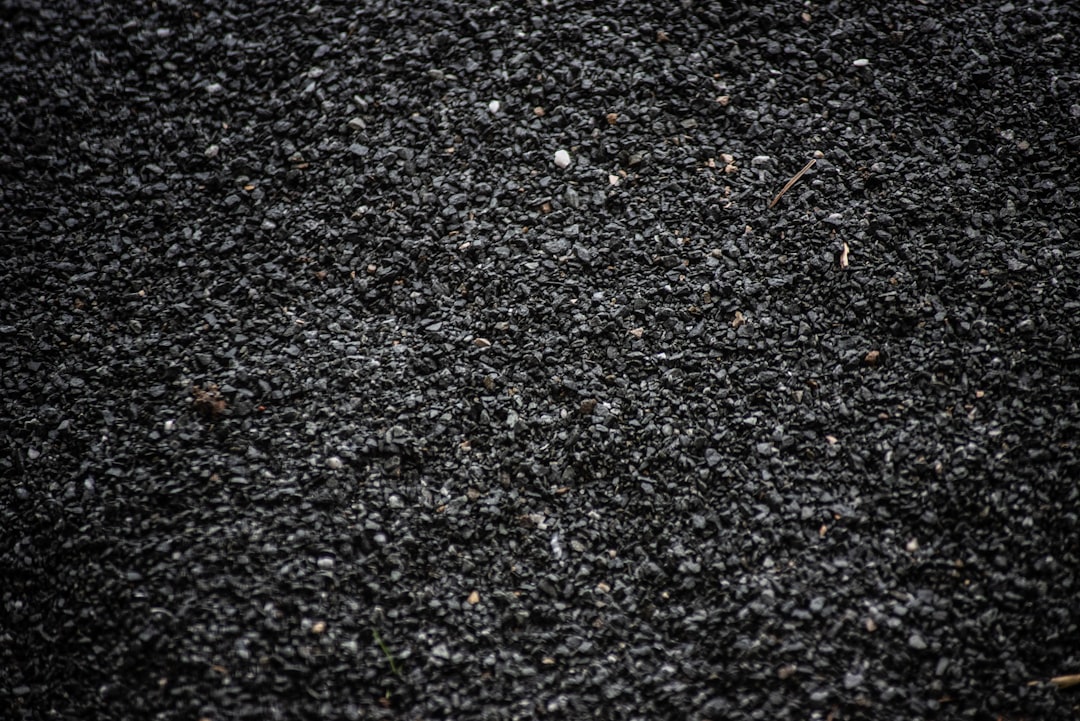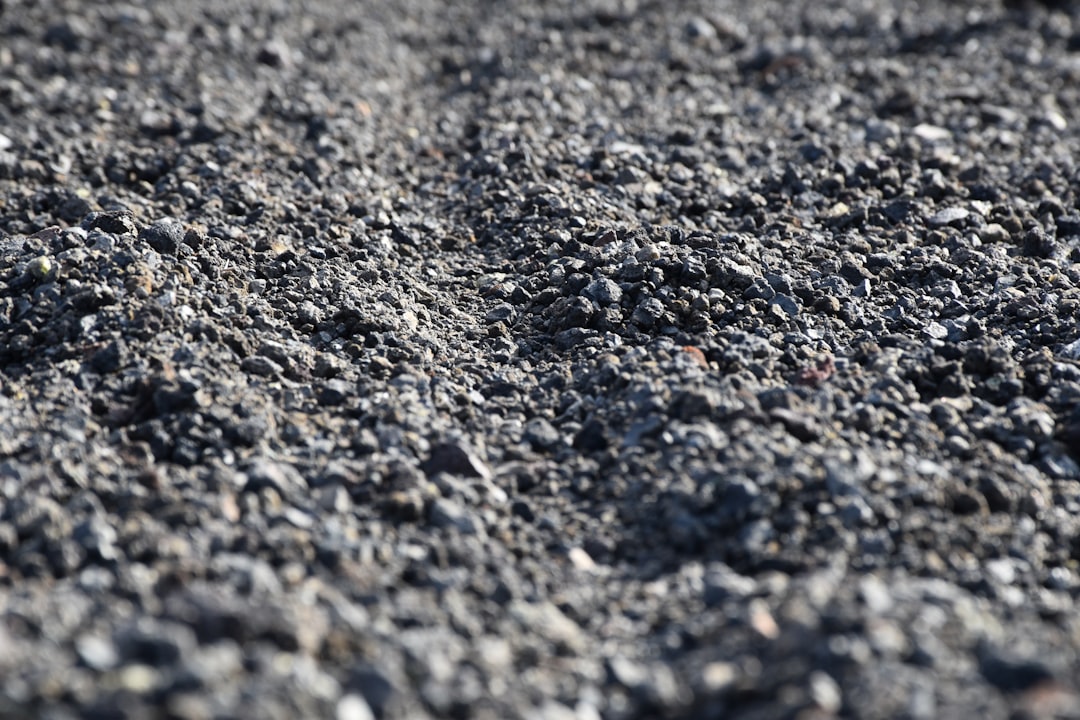

Engage prospects with a scan and streamline customer engagement with FREE QR code marketing tools by Sona – no strings attached!
Create a Free QR CodeFree consultation

No commitment

Engage prospects with a scan and streamline customer engagement with FREE QR code marketing tools by Sona – no strings attached!
Create a Free QR CodeFree consultation

No commitment
In asphalt repair, the challenge of turning physical interactions, such as site visits, signage, or direct mail, into repeatable, measurable business outcomes is more pressing than ever. Traditional outreach methods, from printed flyers to static business cards, often lack the ability to deliver real-time insights or promote seamless customer journeys, leading to missed opportunities and untracked prospects. In a field where reputation, convenience, and timely communication drive new business, bridging the gap between offline encounters and digital engagement can truly set your company apart.
QR codes in marketing have become a strategic tool to connect potential clients at the moment of interest with online resources, from booking forms to service guides, without requiring app downloads or manual data entry. For asphalt repair businesses, QR codes create a direct path from the field, storefront, or parking lot to your digital assets, streamlining tasks like appointment scheduling and quote requests. By doing so, they also offer valuable visibility into which leads are interacting with your signs or collateral, allowing you to convert previously anonymous interest into new opportunities.
Embedding QR codes at every high-traffic touchpoint accelerates the sales cycle, reduces operational overhead, and provides detailed data on customer behaviors and campaign effectiveness. With today’s demands for personalized service and measurable ROI, these solutions give asphalt repair companies the ability to capture interest in real time, transforming old workflows and making business more discoverable, actionable, and measurable in a competitive market.

Bridging the divide between physical touchpoints and online gateways is where asphalt repair companies often lose valuable prospects. A passerby may see an impressive resurfacing job or a crisp yard sign near an active crew, but if the path to book an estimate requires typing a URL later, interest fades. Likewise, printed brochures at hardware stores or community events create curiosity but do not provide an immediate way to act, resulting in missed follow-ups and reduced ROI. QR codes fix this by transforming every offline impression into a direct digital action: scanning to book, request a quote, view project photos, or join a maintenance program.
To drive meaningful engagement, think of QR codes as the connective tissue between your field operations and your marketing stack. Replace outdated analog processes like paper forms, manual sign-up sheets, and static business cards with QR-enabled experiences. A fleet decal can lead to an on-the-spot quote request form. A door hanger can open a pre-filled SMS to schedule a driveway inspection. Each scan captures intent at the precise moment a prospect is most motivated, while your CRM automatically records the source and triggers follow-ups. This turns one-off encounters into measurable sales motions.
Key steps:
Modern QR platforms integrate with CRM tools, automating the process of identifying engaged prospects and connecting each scan with digital follow-up. With a platform like the Sona QR platform, you can manage codes centrally, track performance by asset, and sync scan data into systems like HubSpot or Salesforce, ensuring that no lead is lost due to lack of visibility or manual processes.

Operational friction is a persistent challenge in asphalt repair, where crews distribute business cards or flyers but rarely know which marketing efforts generate real leads. Without clear attribution, it is hard to optimize budgets or adjust campaigns. QR codes solve this problem by making every interaction traceable and actionable, connecting a scan on a job site sign to a form submission in your CRM and, ultimately, to a scheduled service, as outlined in QR code marketing.
Another critical reason QR codes matter is speed. Customers dealing with surface cracks, potholes, or fading striping want quick answers. When a QR code takes them directly to pricing guidelines, a project gallery, or a booking form, it removes unnecessary steps and keeps momentum high. For recurring services like sealcoating, scanning to enroll in seasonal reminders or maintenance plans keeps your brand top of mind and your schedule full.
Many asphalt repair companies find that integrating QR analytics closes the loop on lost leads. A scan on a yard sign can trigger an automated SMS with a booking link. A scan on an estimate can move a prospect into a nurture sequence. With a platform like Sona QR, these connections happen automatically, turning scattered touchpoints into a cohesive customer journey.

Managing incomplete or outdated contact details collected at job sites is a common pain point for contractors. QR codes support multiple formats that improve data capture and streamline key workflows in asphalt repair. By selecting the right format for the job, you can simplify client actions and minimize drop-off.
For most asphalt repair use cases, formats that drive to web links and forms are the most valuable, followed by contact sharing and pre-filled messages for quick communication. Dynamic codes let you update destinations and capture analytics without reprinting materials, which is ideal for seasonal offers, staffing updates, or revised service menus.
Dynamic QR formats allow for updates without reprinting materials, keeping outreach current and relevant year-round. If you are running multiple offers or testing different CTAs across neighborhoods, dynamic codes let you adjust quickly as you learn, all while maintaining a clean historical record in your analytics platform.

Asphalt repair companies often overlook the potential of physical assets to become powerful lead drivers, primarily due to lack of insight into anonymous traffic. When a neighbor pauses to watch your crew pave a driveway or when a property manager walks past a resurfacing project, that attention is valuable. QR codes transform job site signage, vehicles, and documents from static to dynamic conversion tools by inviting action on the spot.
Think in terms of proximity and recency. The closer someone is to the work, the more relevant their interest is likely to be. Curiosity peaks when your crew is active or when a finished surface looks visibly improved. Placing clear, scannable QR codes in those moments maximizes your chances of capturing demand and winning the next job on the block.
Consider these placements:
Using these placements consistently creates a predictable pipeline of trackable interactions. Over time, your analytics will reveal which assets and neighborhoods respond best, allowing for smarter routing of crews, tailored offers, and more efficient marketing spend.

Paper-based workflows can lead to outdated segmentation and missed leads. QR codes enable a smarter, more personalized approach by aligning specific actions with customer intent. When you strategically map codes to the buyer journey, you turn casual interest into active consideration and conversion.
In asphalt repair, three use cases consistently deliver high value: attracting neighbors near active jobs, reducing friction during proposal review, and strengthening reputation with post-service feedback. Each one uses a different code destination to match the moment.
Transitioning from paper to digital engagement points not only improves the customer experience, it also gives asphalt repair companies a continuous feedback loop. You will know which services are most in demand by neighborhood, which proposals stall, and which crews generate the most referrals, all based on QR scan and conversion data.
Wasted ad spend on unqualified leads is common when there is no way to prioritize based on engagement. Every QR scan is a customer intent signal that includes context such as location, time, and asset type. By deploying multiple QR codes across touchpoints, you can segment your audience automatically and use that data to fuel precise retargeting and follow-up campaigns.
For asphalt repair companies, useful audience distinctions often include property type and lifecycle stage. A scan on a commercial lot resurfacing sign suggests a facilities or property management interest. A scan from a residential yard sign indicates homeowner interest. A scan from an invoice suggests an existing client primed for maintenance or referrals. Segmenting these signals allows you to tailor messages and offers appropriately.
Example: Property managers scanning a code on commercial signage can be nurtured with content on asphalt lifecycle, ADA compliance, and preventive maintenance. Residential scans from yard signs can trigger seasonal promotions for sealcoating or driveway repairs, with reminders timed around weather and local events. With Sona QR, each code becomes a smart entry point into your funnel, and segments update automatically as new scans occur.
Asphalt repair marketing is often split across flyers, mailers, online ads, and field signage, with limited visibility into what moves the needle. QR codes can unify these channels by providing a consistent, measurable trigger across offline and digital media. When every piece of creative includes a scannable path to the next step, you transform siloed efforts into a cohesive customer journey.
The key is to assign a role to each channel and choose the QR destination that best advances the buyer’s decision. Door hangers might drive to a neighborhood-specific project gallery, while invoices drive to a referral program or maintenance plan. By measuring scan activity and conversions across channels, you can double down on what works and sunset what does not.
QR codes serve as the offline onramp to your digital marketing engine. They also unlock a new layer of data collection across channels that were once difficult to measure. With a centralized platform like Sona QR, you can manage codes at scale, monitor performance in real time, and sync scan data with your CRM and ad platforms to orchestrate timely follow-ups.
A successful QR rollout pairs smart planning with disciplined execution. Use the following steps to go from idea to measurable impact, then repeat the cycle with insights from your analytics.
Begin by selecting a specific bottleneck or opportunity and define the business outcome you want. In asphalt repair, common goals include turning job site interest into quote requests, shortening proposal approval times, or increasing reviews and referrals after completion. The clearer the goal, the easier it is to design a QR experience that drives action.
Choose the QR type that supports tracking and future flexibility. In most cases, dynamic QR codes are preferable because they allow edits to the destination and capture analytics. Static codes can work for evergreen assets like a homepage or a fixed PDF but limit insight and agility.
Design is about clear communication and reliable scannability. Your QR must be easy to see, understand, and scan under real-world conditions such as glare, distance, and motion. A strong call to action and visual framing make a big difference in scan rates.
Roll out your codes where your audience already interacts with your brand. Start with high-intent placements such as active job sites and invoices, then layer in broader awareness channels like fleet wraps and neighborhood mailers. Prioritize placements that align with your growth plan and operational capacity.
Measurement turns QR activity into continuous improvement. Review dashboards weekly to compare performance by asset, neighborhood, and audience segment. Adjust creative, CTAs, and destinations quickly as insights emerge.
This structured process reduces lost prospects, automates follow-ups, and strengthens targeting and conversion. By cycling through plan, deploy, measure, and optimize, your QR program compounds results quarter after quarter.
Many companies struggle to connect physical marketing spend directly to revenue because traditional tools do not capture what happens after a flyer is handed out or a truck drives by. QR tracking enables real-time, granular measurement of engagement that you can attribute to specific assets and campaigns. When you know which sign, vehicle, or brochure sparked a scan, you can follow the digital journey to booking, close, and upsell. For methodology on tying offline efforts to outcomes, see Sona’s guide to offline attribution.
Analytics also reveal operational opportunities. If scans spike in a certain neighborhood after a high-visibility job, you can route canvassing there with tailored door hangers. If proposal scans occur late at night, scheduling automated reminders early the next morning can accelerate approvals. The result is a smarter use of both marketing and field resources.
With Sona QR and Sona, you can go beyond simple scan counts. Sona is an AI-powered marketing platform that turns first-party data into revenue through identity resolution, attribution, and data activation, linking QR scans to website visits, ad clicks, email engagement, and CRM activity. This unified view helps you attribute revenue properly and optimize both marketing and operations with confidence.
Expanding your QR impact comes down to clarity, consistency, and automation. Clear CTAs tell people why to scan. Consistent placements train your market to expect a next step. Automation ensures every scan gets the right follow-up without burdening your team. When these elements align, scan volume and conversion rates rise together.
Focus on the media you use most and the buyer journey you want to support. For many asphalt repair businesses, that means job site signage, door hangers, proposals, and invoices. Equip your field and office teams to promote scanning and respond quickly to high-intent signals.
Example: Place a QR code on completion signage that reads “Love the result? Scan to refer a neighbor and earn a gift card.” Those scans feed a referral pipeline and surface warm leads on the same street. Similarly, add a QR code to invoices that reads “Lock in your spring sealcoat today.” Scans trigger a seasonal schedule with priority pricing, boosting off-season bookings and protecting margins.
For asphalt repair companies looking to turn day-to-day operations into strategic growth channels, QR code solutions are a proven answer. Instead of relying on chance, incomplete data, or outdated lists, every sign, mailer, or fleet vehicle becomes an engine for engagement and intelligence. Integrating QR processes reduces friction, captures real intent, and replaces guesswork with attribution, which prevents lost deals and minimizes churn. Companies that adopt these tools lead their markets with smarter targeting, stronger relationships, and measurable campaign results.
Adopting QR workflows empowers asphalt repair businesses to bridge crucial gaps between offline presence and digital engagement. With well-chosen placements and dynamic code management, each high-traffic touchpoint becomes a measurable growth channel that solves issues like anonymous foot traffic, missed follow-ups, and stale customer data. Because every scan is a clear signal of prospect intent, your team gains the insight needed to invest where it counts. With platforms like Sona QR and Sona.com, you can launch quickly, capture demand at the source, and connect scans to revenue, building a scalable engine for conversion and retention. Start creating QR codes for free.
QR codes have transformed asphalt repair companies from relying solely on traditional methods into leveraging dynamic, measurable customer engagement tools. Whether it’s streamlining project access, enhancing communication with clients, or providing instant service updates, QR codes replace manual paperwork with quick, mobile-friendly interactions that capture valuable data to optimize operations and customer satisfaction. Imagine instantly providing clients with detailed repair information or maintenance schedules through a simple scan—boosting trust and repeat business effortlessly.
With Sona QR, asphalt repair companies can create dynamic, trackable QR codes in seconds, update service details or offers without reprinting materials, and connect every scan directly to actionable insights. No missed communications, no lost leads—just smarter, more efficient service delivery that drives growth. Start for free with Sona QR today and turn every scan into a seamless access point, enhanced customer experience, and new business opportunity.
QR codes connect physical touchpoints to digital resources, enabling real-time lead capture, reducing friction in booking and inquiries, providing actionable attribution, and lowering marketing costs by making offline interactions measurable and automatable.
They can place QR codes on yard signs, vehicles, brochures, and invoices to direct prospects to booking forms, project galleries, or feedback surveys, capturing intent at the moment of interest and automating follow-ups to turn offline interest into measurable leads.
Web links for booking and galleries, vCards for contact sharing, pre-filled SMS or email for quick inquiries, app downloads for scheduling, and feedback forms for reviews are common formats that streamline workflows and improve data capture.
High-traffic and relevant touchpoints like on-site signage, fleet vehicles, job site equipment, invoices, door hangers, brochures, event banners, and neighborhood mailers create opportunities to capture interest from nearby homeowners, property managers, and prospects.
By using dynamic QR codes linked to analytics platforms, companies can monitor scan rates by location, asset type, time, and device, integrate data with CRM systems, and attribute leads and revenue to specific marketing assets and campaigns.
Start by defining a clear business objective, choose the appropriate dynamic or static QR code type, design and test codes for scannability, deploy across targeted channels aligned with customer behavior, and continuously track and optimize based on analytics.
QR codes capture prospect intent instantly and automatically sync with CRM systems to trigger personalized follow-ups, reducing lost opportunities from anonymous offline interest and enabling timely communication for bookings, approvals, or referrals.
Dynamic QR codes allow editing the destination URL without reprinting, provide detailed analytics on scan activity, support A/B testing of calls to action, and enable real-time updates to offers or service information, enhancing flexibility and measurement.
Each scan provides customer intent data including location and asset type, enabling segmentation by property type or buyer stage, which feeds CRM and ad platforms to create precise retargeting campaigns with tailored messages and offers.
By embedding QR codes consistently across flyers, mailers, social campaigns, on-site signage, fleet wraps, invoices, and events, companies unify offline and online channels, track engagement across touchpoints, and create a cohesive, measurable customer journey.
Use Sona QR's trackable codes to improve customer acquisition and engagement today.
Create Your FREE Trackable QR Code in SecondsJoin results-focused teams combining Sona Platform automation with advanced Google Ads strategies to scale lead generation

Connect your existing CRM

Free Account Enrichment

No setup fees
No commitment required

Free consultation

Get a custom Google Ads roadmap for your business






Launch campaigns that generate qualified leads in 30 days or less.
